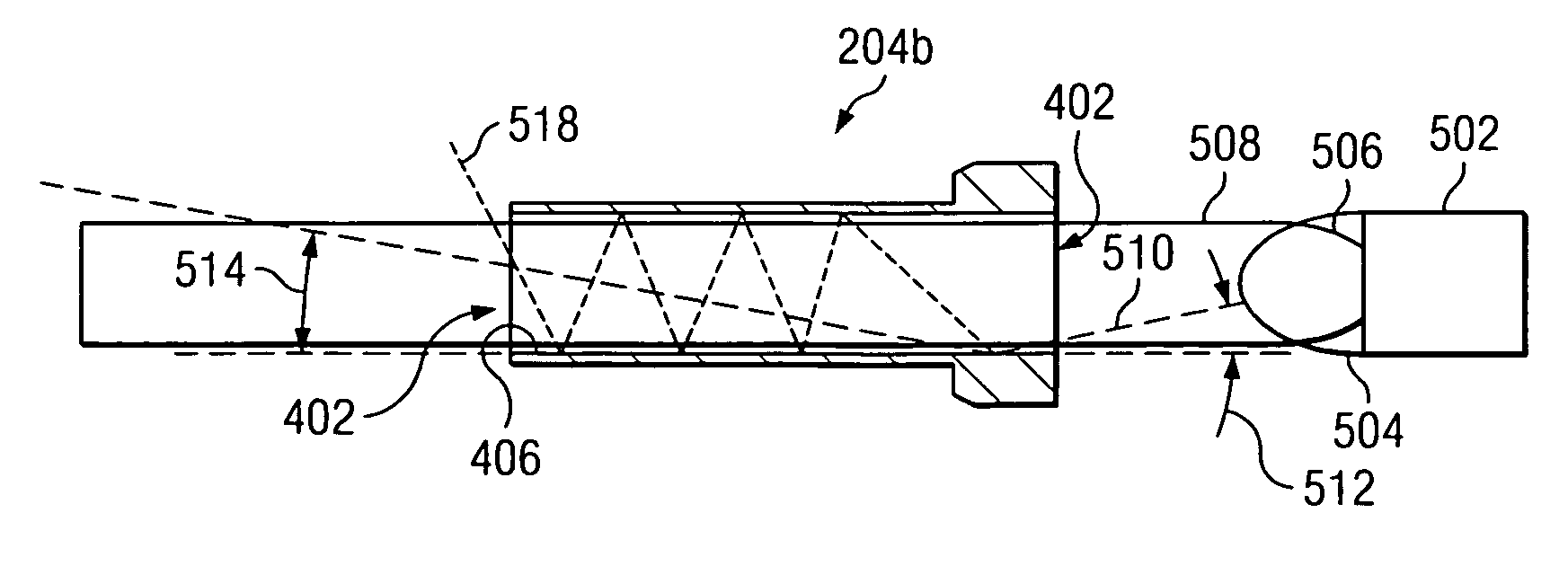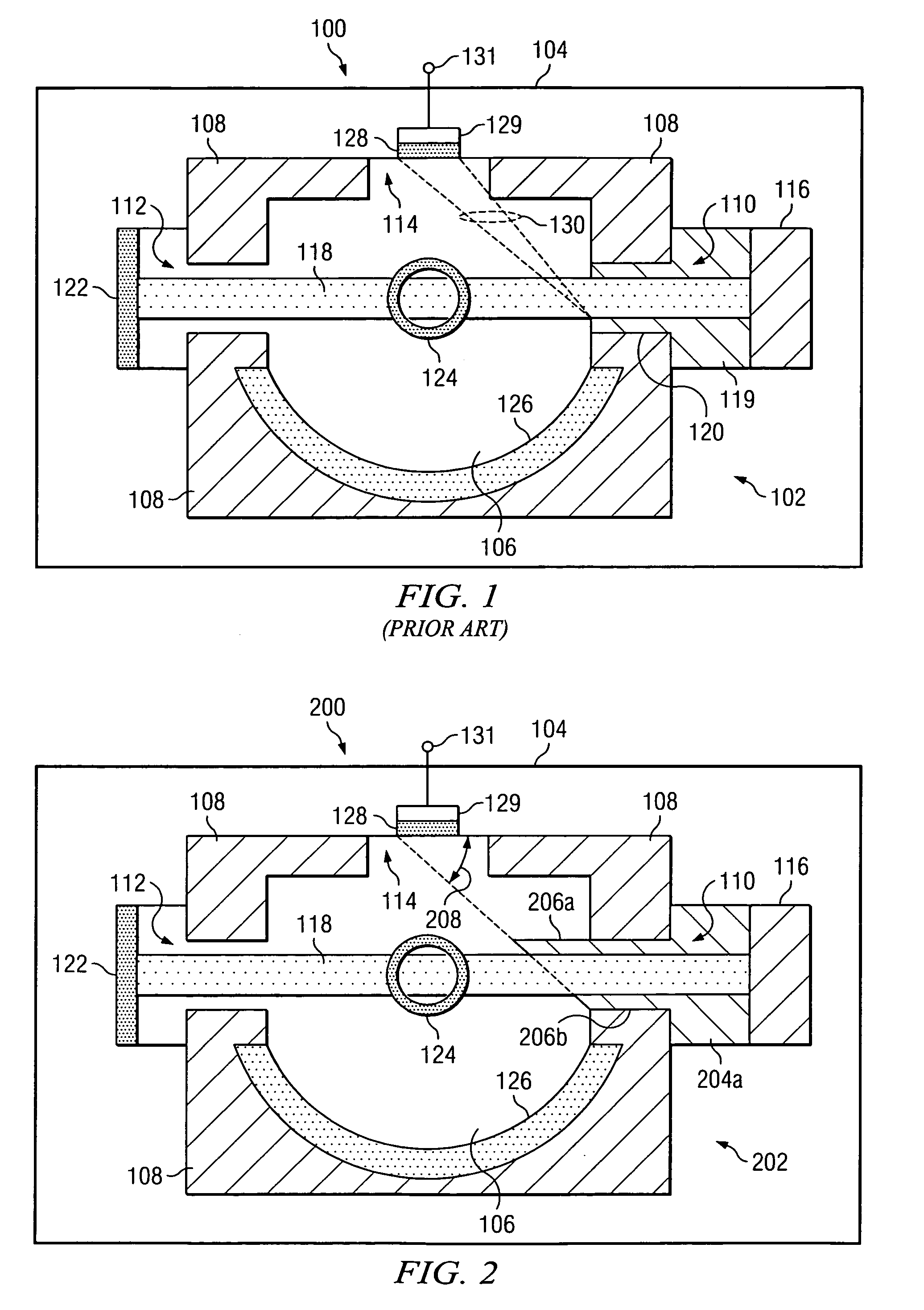Particle counter with self-concealing aperture assembly
a particle counter and aperture assembly technology, applied in the field of particle measurement systems, can solve the problems of inability to effectively reduce optical noise, scattered light noise floor of the system, and very different operation principles so as to eliminate scattered light noise, and reduce the scattered light noise of the particle measurement system or particle counter.
- Summary
- Abstract
- Description
- Claims
- Application Information
AI Technical Summary
Benefits of technology
Problems solved by technology
Method used
Image
Examples
Embodiment Construction
[0030]FIG. 2 is a schematic of a particle counter or particle measurement system 200 including a single component light collecting system according to the principles of the present invention. As shown, the particle measurement system 200 is composed of many of the same parts as the conventional particle measurement system 100 of FIG. 1. For example, the particle measurement system includes a single component light collecting system 202 that includes sample chamber 106, frame 108, apertures 110, 112, and 114, laser diode module 116, beam stop 122, inlet orifice 124, collecting mirror 126, light detector 128, signal processor / amplifier 129, and output 131. However, the particle measurement system 200 uses alternative components for performing measurement of particles of gas, such as air, to substantially eliminate scattered light noise. For example, the particle measurement system 200 may include an aperture assembly 204a according to the principles of the present invention.
[0031]Alth...
PUM
 Login to View More
Login to View More Abstract
Description
Claims
Application Information
 Login to View More
Login to View More - R&D
- Intellectual Property
- Life Sciences
- Materials
- Tech Scout
- Unparalleled Data Quality
- Higher Quality Content
- 60% Fewer Hallucinations
Browse by: Latest US Patents, China's latest patents, Technical Efficacy Thesaurus, Application Domain, Technology Topic, Popular Technical Reports.
© 2025 PatSnap. All rights reserved.Legal|Privacy policy|Modern Slavery Act Transparency Statement|Sitemap|About US| Contact US: help@patsnap.com



